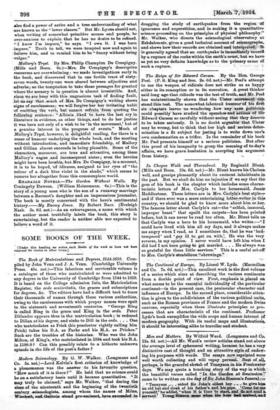. Modern Seismology. By G. W. Walker. (Longmans and Co.
5a. net)—Lord Kelvin's first criterion of knowledge of a phenomenon was the answer to his favourite question, "How much of it is there ?" He held that no science could be on a satisfactory basis until it became quantitative. " It may truly be claimed," says Mr. Walker, "that during the elose of the nineteenth and the beginning of the twentieth mattury seismologists, among whom the names of Milne, Wieolsert, awl Gelitain steed pre-eminent, have succeeded in
dragging the study of earthquakes from the region Of ignorance and superstition, and in making it a quantitative science proceeding on the principles of physical philosophy." Mr. Walker, who directs the seismological observatory at Eskdalemnir, gives a good technical account of seismographs, and shows how their records are obtained and interpreted. In is generally agreed that an earthquake is immediately cause& by a rupture of the rooks within the earth's orust, but we have as yet no very definite knowledge as to the primary cause of such a rupture.














































 Previous page
Previous page